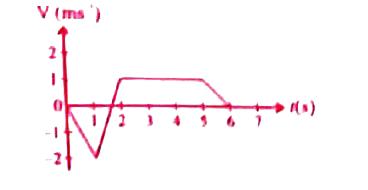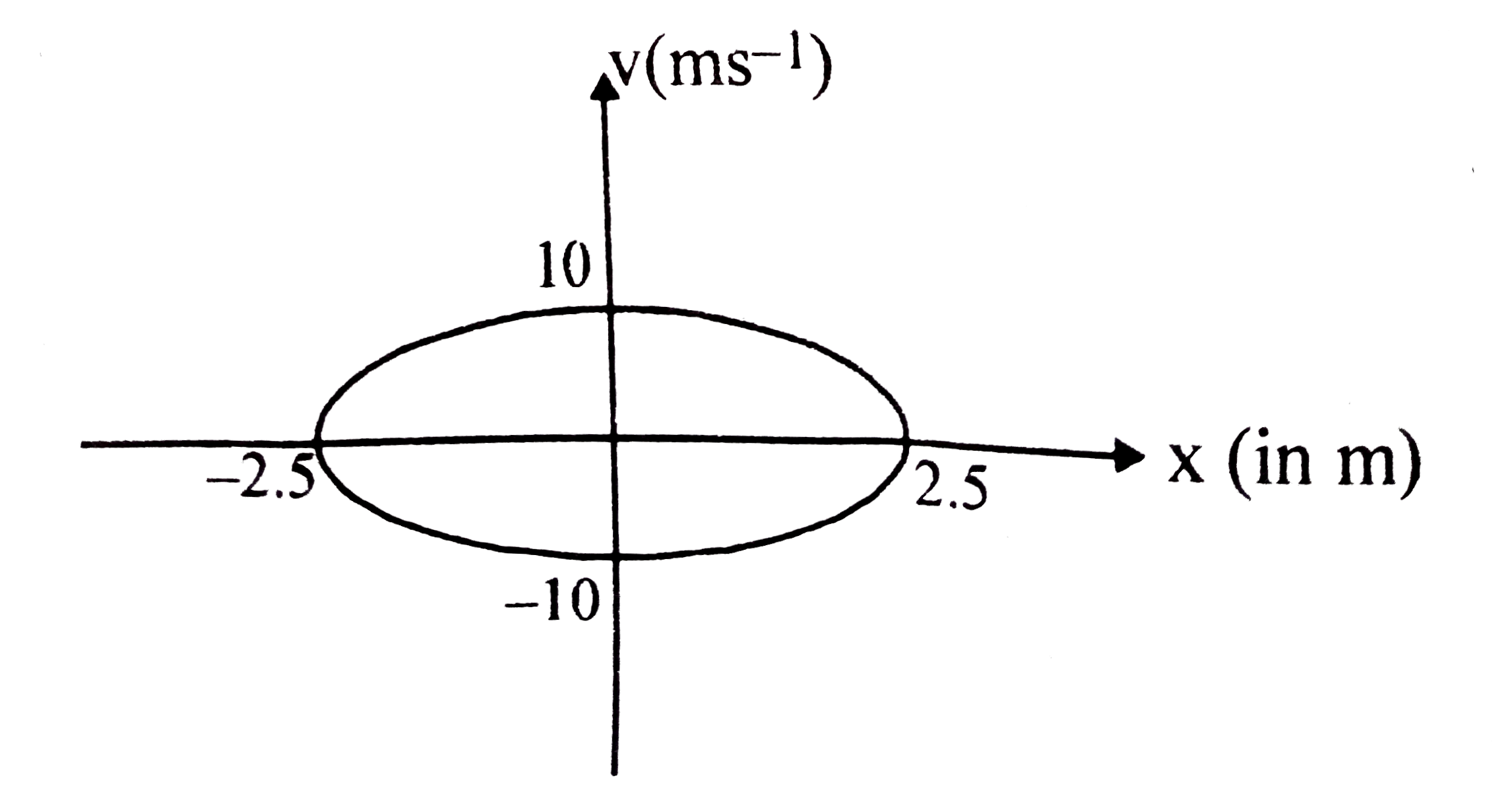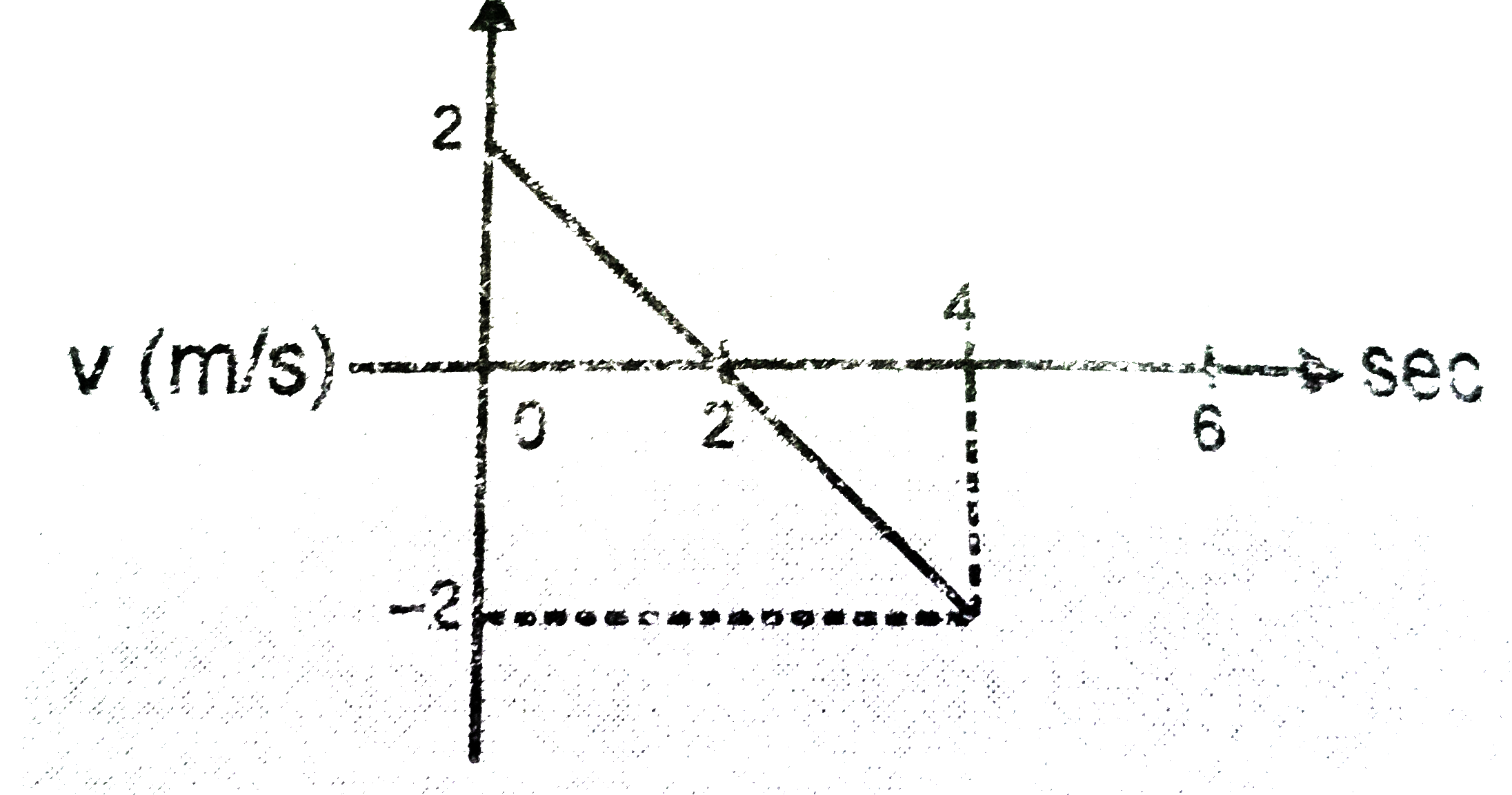The following velocity-time graph represents a particle moving in the positive x-direction . Analyse its motion from 0 to 7s . Calculate the displacement covered and distance travelled by the particle from 0 to 2s
 Solution in Tamil
Solution in Tamil
As per graph,
(a) From 0 to 1.5s the particle is moving in a opposite direction.
From 1.5s to 2s the particle is moving with increasing velocity.
From 2s to 5s velocity of the particle is constant of magnitude 1ms−1
From 5 to 6s velocity of the particle is decreasing.
From 6s to 7s the particle is at rest.
(b) Distance covered by the particle - Arca covered under (v-t) graph
=12×2×1.5+12×1×0.5=1.5m+0.25m=1.75m
Displacement of the particle =−12×2×1.5+12×1×0.5
=−1.5m to 0.25m=−1.25
Topper's Solved these Questions
- BOOK - FULL MARKSCHAPTER - KINEMATICSEXERCISE - ADDITIONAL QUESTIONS SOLVED (SHORT ANSWER QUESTIONS (1 MARK))102videos
KINEMATICS
- BOOK - FULL MARKSCHAPTER - KINEMATICSEXERCISE - ADDITIONAL QUESTIONS SOLVED (SHORT ANSWER QUESTIONS - 1 (3 MARKS))14videos
KINEMATICS
- BOOK - FULL MARKSCHAPTER - KINEMATICSEXERCISE - ADDITIONAL QUESTIONS SOLVED (NUMERICAL QUESTIONS)42videos
KINEMATICS
- BOOK - FULL MARKSCHAPTER - HEAT AND THERMODYNAMICSEXERCISE - ADDITIONAL QUESTIONS SOLVED (Numerical Problems)16videos
HEAT AND THERMODYNAMICS
- BOOK - FULL MARKSCHAPTER - KINETIC THEORY OF GASESEXERCISE - Addtional Numerical Problems10videos
KINETIC THEORY OF GASES
Similar Questions
What is meant by Frame of reference?
02:46View SolutionIs the acceleration of a particle in circular motion not always towards the centre? Explain.
02:35View SolutionThe V-t graphs of two objects make angle 30∘ and 60∘ with the time axis. Find the ratio of their accelerations.
02:01View SolutionThe length of a metal wire is l1 when the tension in it is T1 and is l2 when the tension is T2. The natural length of the wire is:
02:46View SolutionIf the rms speed of hydrogen molecules at 300K is1930ms−1. Then what is the rms speed of oxygen molecules at 1200K.
03:43View SolutionThe velocity-time graph of a particle in straight line motion is veloity-time graph of a particle in straight line motion is shown in. The particle starts its motion from origin. . The distance of the particle from the origin after 8 s is .
02:37View SolutionThe figure shows graph between velocity 'V' and displacement 'X' from mean position of a particle performing simple harmonic motion

The time period of motion of particle is:View SolutionVelocity time graph for a particle moving in a line is given.
Calculate the displacement of the particle and distance travelled in first 4 seconds.
 02:09View Solution
02:09View SolutionPosition-time graph of a particle in motion is shown in fig. Calculate - (i) Total distance covered (ii) Displacement (iii) Average speed (iv) Average velocity.
02:22View SolutionX -अक्ष के अनुदिश गतिशील कण का समय-वेग ग्राफ प्रदर्शित हे । ज्ञात कीजिए : (i) त्वरण 0, (ii) 0 से 4 सेकण्ड तक चली गयी दूरी|
 View Solution
View Solutionx=0 पर स्थित एक कण समय t=0 से X-धनात्मक दिशा में गतिशील है जहाँ v=α√x है कण का समय t पर विस्थापन होगा :
03:45View SolutionA particle starts from origin at time t=0 and moves in positive X - direction. Its velocity ¯v=10tˆi cm/ sec. The distance covered by the particle in 8 sec. will be
05:09View SolutionThe figure shows a velocity-time graph of a particle moving along a straight line If the particle starts from the position x_(0) = –15 m, then its position at t = 2s will be
02:49View SolutionA particle starts from origin at time t=0 and moves in positive x-direction. Its velocity v varies with times as v = 10that(i) cm/s. The distance covered by the particle in 8 s will be
03:34View SolutionThe following velocity-time graph represents a particle moving in the positive x-direction . Analyse its motion from 0 to 7s . Calculate the displacement covered and distance travelled by the particle from 0 to 2s
 00:49View Solution
00:49View SolutionThe following velocity-time graph represents a particle moving in the positive x-direction . Analyse its motion from 0 to 7s . Calculate the displacement covered and distance travelled by the particle from 0 to 2s
 03:09View Solution
03:09View Solution

